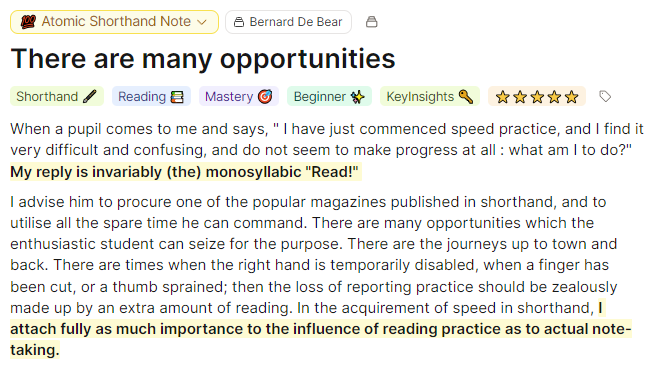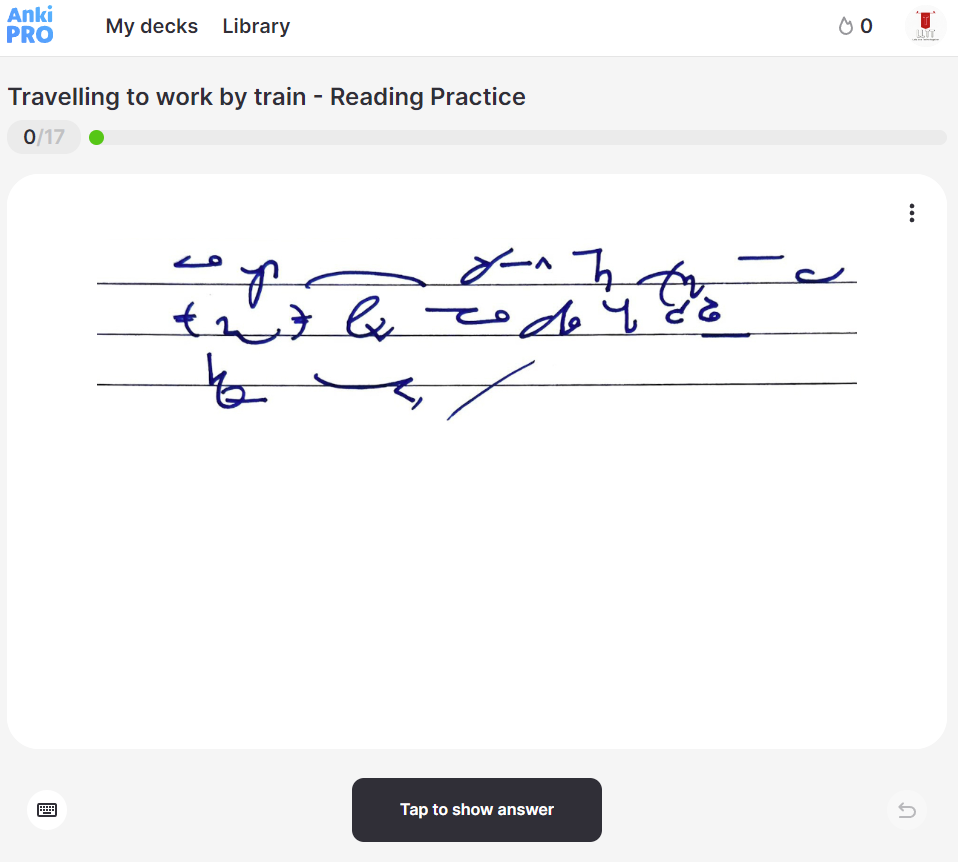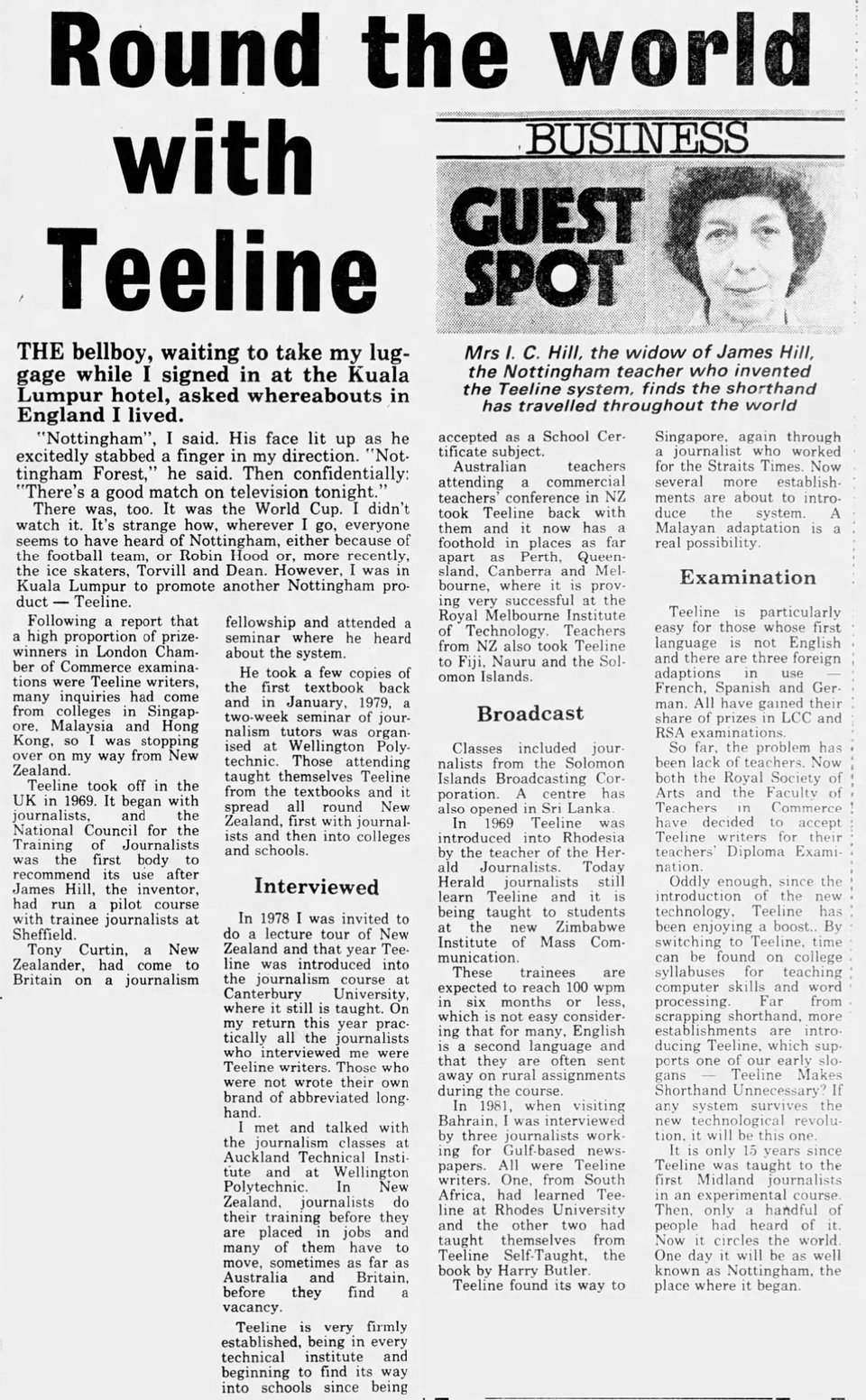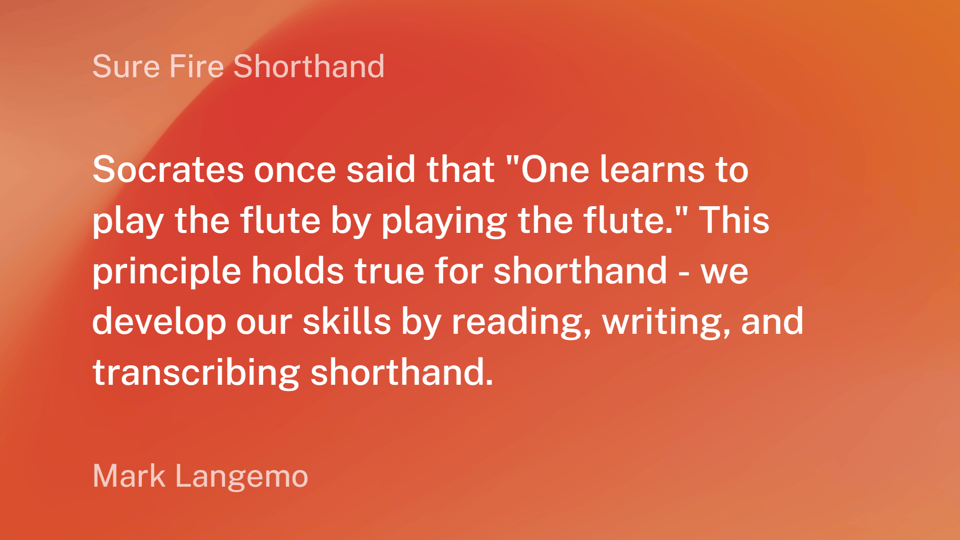LLTT Newsletter #14 - June 2024

LLTT - Issue #14 - June 2024
Welcome back! In this mid-year issue we’re going to look at the topic of Reading Shorthand; hear from Rhys Thomas, a Masters student studying Sports Journalism at Liverpool John Moores University who recently passed the 100 (with 100% accuracy!); share some quick tips of our own about tackling a tougher dictation, and finally, wrap up by highlighting a 1983 article (written 41 years ago!) by Ivy Constance Hill entitled “Round with World with Teeline”.
Reading Shorthand

Read shorthand? Aren’t we here to write it? Let’s discuss.
Before we begin, we note there are multiple facets of reading shorthand. Firstly, there is the reading of your own notes, whether for transcription purposes or otherwise. Secondly, there is the reading of well-printed Teeline from others for study purposes. It is the latter we are focusing on today.
What does history say?
Quite a bit, honestly. Putting Teeline aside for the moment, good shorthand teachers throughout history have always implored students to spend a portion of their revision time reading well-constructed shorthand.
Let’s take a brief look at Bernard De Bear’s “High Speed in Shorthand - How to Attain It” from 1901. Yes, it is old, (nor is it about Teeline) however, wisdom does not have a time limit.

De Bear believed that reading shorthand was extremely important for shorthand students, explaining that he considered reading practice to be as important as note taking. He emphasised students should read their own shorthand notes in addition to whatever printed materials they could find and explained students should make a mark in the margin of their notes when they were unsure about a word or phrase, so they could easily return to it later.

In the world of shorthand, the adage "practice makes perfect" takes on new meaning when we consider the often-overlooked skill of reading.
Let’s start with the obvious. Well-written shorthand provides examples of outlines and word groupings. Imitation is generally one of the first principles of learning and by studying the printed page, you begin to internalise the most efficient ways to construct your own outlines and/or groupings.
More importantly, frequent exposure to printed shorthand primes your brain for rapid recognition. This improved cognitive processing directly enhances your transcription speed and accuracy. It is said speed in shorthand is largely a matter of instantaneous outline recognition. Regular reading practice hones this crucial ability. In the words of shorthand champion Nathan Behrin (1889-1971):
"The secret of speed is not in the fingers but in the mind."
Regular engagement with shorthand materials keeps your theoretical knowledge razor-sharp. And one of the best ways to enhance your Teeline skill is to read more of it. By immersing yourself in well-written shorthand, you reinforce the rules and principles that form the bedrock of your skills.
Reading exposes you to vocabulary and contexts you may otherwise miss. This exposure is invaluable as the shorthand writer must be prepared to write on any subject under the sun. By reading widely, you help prepare yourself for the vast array of topics you may encounter.
Let’s next consider this thought from Frank Harrison.

It is clear what those who came before thought about the relative benefit of reading shorthand.
However, this advice should only be followed after you have learned your theory and can write fairly well.
To clarify, we would not recommend that a beginner spend one hour reading and only half an hour writing.
It’s not that it isn’t useful, but it’s important to understand that sight recognition of outlines and groupings is one set of skills and being able to produce (i.e., write them) through dictation is yet another set. You need a base level of skill in writing shorthand before reading will start to move the dial for you.
So, all this is well and good. But where does one find printed Teeline? Indeed.
While the production of printed shorthand essentially vanished during the 20th century, Let’s Love Teeline Together is committed to doing our part to expand access to printed Teeline. We have some exciting plans for the future as it relates to this topic but the details are not finalised yet.
In the meantime, there are two things we can recommend to help you get started.
Firstly, there might be some of you that do not know we have a Reading Practice section on our YouTube channel. This will be added to as time permits. Additionally, the vast majority of our Exam Video series dating back to December 2022 can easily be used for reading practice. Simply turn down the volume as the video plays and read. Best of all, you can pause as needed when a particularly good outline or grouping catches your eye.
Secondly, we are experimenting with spaced repetition reading exercises through AnkiPro- a flashcard program.

For readers of our newsletter, we have created a breakdown of our Mock Exam “Travelling To Work By Train” into seventeen flash cards - the purpose of which is straightforward. When you begin, a card (like the one shown above) is presented. Read it as quickly as you can. Resist the urge to hit “Tap to show answer” before you have mentally worked out what you believe the longhand to be.
If you dedicate a few minutes each day, your ability to read Teeline will improve greatly. More importantly, the more you do this, you will find that even when undertaking other dictation, relevant outlines and groupings will come more easily to you.
If you are interested, please send a request, along with your best email, to admin@letsloveteelinetogether.com. Since this is a separate app from our website, we need to add your email separately. As always, we take your privacy seriously!
Let us know what you think!
How I passed 💯 wpm in May when I didn’t have 60 wpm in February by Rhys Thomas

Rhys is a Masters student studying Sports Journalism at Liverpool John Moores University. The following was graciously supplied by Rhys for inclusion in this month’s newsletter.
Now that I have achieved 100 wpm shorthand, it seems laughable to think that just months ago the speed of a 60 wpm dictation was alarming. But with a few simple things to commit to, it really can be quite a satisfying and linear journey of progression.
All of this advice is probably quite obvious, and you may have heard it before, but it’s worth writing (down) since it holds true and is what got me to the NCTJ’s heralded Gold Standard (100 wpm).
I started practising dictation in January, first in bursts and then 40 wpm passages, steadily increasing the speed and length throughout the next month until I signed up for the 60 wpm exam towards the end of February.
Before even bothering with dictation, it is vital to nail down at least most of the theory, the common special outlines, and word groupings. Whilst some of them might feel superfluous, they are going to become more and more useful, and then essential, at higher speeds. Plus, if you become used to using them at lower speeds, you save yourself the nightmare of effectively re-learning aspects of shorthand when you are looking to work at higher speeds.
Once you have that down, dictation is really the only way forward, and it can get repetitive. This is where mixing up the speeds can come in handy. Perhaps it was just for personal reassurance, but I always looked to take an exam when I could work at about 10 wpm above the necessary speed. It helped to vary practice and mitigate exam-day stress.
I found this especially useful in my 60 wpm exam, where I found my hand shaking like it was the most important moment of my life and panic setting in throughout the first half. Luckily, I had some breathing space being able to work at 70 wpm and was still able to pass.
I repeated this strategy for 80 wpm, and whilst I was not quite at 110 wpm for my 100 wpm exam, I felt confident enough with the process to commit to the exam, which I again was successful in.
Another basic tip is to spread practice out over the week rather than cramming hours into a single session. Twenty to thirty dedicated minutes most days helped me to make consistent progress.
One more (tip) is to make sure you transcribe at least some of your notes from dictation. It is boring and more time-consuming, but so worthwhile to see if what you are writing at speed is actually legible enough to get back to English.
Lastly, I also benefited from some brilliantly passionate and helpful tutors in Christy Biggar at LJMU and Jo Goodall at Let’s Love Teeline Together. If you are lucky enough to have this sort of expertise available, it’d be silly to waste it!
Hopefully at least some of that was useful for anyone looking to climb the speed ladder; good luck in doing so!
In summary:
- Commit to a few simple things for a satisfying journey of progression in Teeline shorthand.
- Nail down your theory, special outlines, and word groupings before starting dictation practice.
- Get used to using special outlines and word groupings at lower speeds to avoid re-learning aspects of theory at higher speeds.
- Focus on dedicated dictation practice once you have the theory down, and mix up your speeds to keep it interesting.
- Take an exam when you can work at about 10 wpm above the necessary speed for personal reassurance and to mitigate exam-day stress.
- Spread your practice out over the week, dedicating 20-30 minutes on most days for consistent progress.
- Transcribe at least some of your notes from dictation to ensure that your writing at speed is legible and sufficient to get back to English.
- Remember: achieving 100 wpm shorthand is a remarkable feat, and the journey from 60 wpm to 100 wpm can be accomplished with dedication and practice.
Well done, Rhys!
One, Two or Three?
Here’s a strategy that might help you work through a tougher (prepared) dictation.
Take a passage and break it down into sentences. You are then going to rank each sentence on a scale of one through three; one’s being “easy”, two’s being “medium” and three’s being “hard”.
A “one” is a sentence you could easily write at any time, while a “three”, for any number of reasons, has complexity that must be worked through. Your “two’s” might generally be straightforward with the exception of an unknown word. Alternatively, you might discover a way to employ a newer word grouping that just requires some initial effort.
After ranking them, and instead of starting at the beginning and moving through the dictation sequentially, here’s a better idea: Begin with those sentences you have marked as 3’s (hard) before moving onto the 2’s (medium). If you have labelled a sentence as a one, then you probably don’t need to spend that much time on it at first.
Once you have spent some time working through the 3’s and the 2’s (repetition, repetition, repetition), you can then start to put it all together.
The “theory” behind this is simple. Broadly speaking, there is no need to “practice” that which you can already do well. Instead, start with the hardest “problems” in a piece because if you don’t, you won’t get by them when running through it under dictation anyway.
This takes significantly more time, but there is no better way to find out where your “breakdowns” are going to be. Either you know the outlines and groupings well or you don’t. And if you don’t, this is the opportunity to stop and learn.
This method, while more taxing, is what separates those who "can perform” from those who “hope” they can. And just like a musician, you need to have an appreciation for the constituent parts before you can make the whole piece “sing.”
Time Capsule - “Round the World With Teeline” - from October 1983
Mrs I.C. Hill, the widow of James Hill, the Nottingham teacher who invented the Teeline system, finds the shorthand has travelled throughout the world.

Thanks for reading!
Be sure to visit us at the LLTT Website, YouTube, Facebook, Instagram, Quizlet and Soundcloud.
As always, if you have suggestions or topics you'd like to see covered in future newsletters, please contact us: https://www.letsloveteelinetogether.com/contact-us.
If you find this newsletter helpful, please help us spread the word and forward to a friend!
A Parting Thought

**"Don't Get Worried. Don't Get Stressed. Let's Love Teeline Together."**

-
Is it possible to get the first 13 issues of the newsletter from somewhere? Kind regards.
-
Dur! Found them....the word "Archive" at the top of the page was a clue.... All this is just absolutely wonderful stuff, by the way. I can't tell you how much it is appreciated.
-
Oh well....if a things worth saying, it must be worth saying THREE times. Sorry about that...can't delete two of them for some reason.
Add a comment: